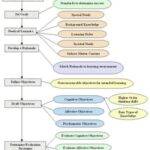Class: Middle School Social Studies/Government/History/Etc.
Lesson: Making connections to the Bill of Rights
*Prior to lesson, students should have gone through and discussed the Bill of Rights and what it is*
Materials Needed: Each student should have a list of the Bill of Rights
Anticipatory Set: Teacher will review the amendments within the Bill of Rights, which were introduced the previous day. Teacher will review any difficult concepts to make sure students have basic understanding of each amendment.
Objectives: At the end of the lesson, students will have an understanding of why the Bill of Rights are in place, what it would be like without them, and why they are important.
Procedure/Input: Teacher will explain that the following activities will be used to discover the importance of the Bill of Rights and give us an idea of our lives without them. Teacher will make a connection to the Ancient Greeks and the City-States and ask students to be thinking of why the Greeks might have wanted individual rights such as those in the Bill of Rights.
Modeling (2-4 min): Teacher will describe a situation that violates an Amendment from the Bill of Rights. Teacher will refer back to the Bill of Rights and determine which right the scenario violates.
Teacher Scenario: You are at home watching TV when someone knocks on your door. Before you answer, the police burst into your home and begin to look through your things. When you ask what they are doing, they tell you that someone has accused you of doing something illegal and they are looking for evidence. When they are done, they take boxes of your things away. (Amendment 4)
Check for Understanding: Teacher will ask students to think of some ways their life (or the lives of someone) might be different without the 4th Amendment, violated in the teacher scenario. Students will be asked to “paint a picture” of what life would be like without this law in place.
Guided Practice: Teacher will give each cluster, group, or 3-5 students, a scenario that violates a specific amendment in the Bill of Rights. Teacher will ask the students to work together as a group and decide which right is being violated. While groups are deciding, teacher will walk around the room and make sure students are coming to the correct conclusions.
Scenario One: During a time of peace, a few soldiers from the army come into your home and announce they are going to stay in your home for a week and you must give them a bed and feed them.
(Amendment 3)
Scenario Two: You have been accused of robbing a bank. You go through a trial and are found not guilty. Five years later, with new technology, there is new evidence against you. You are notified that next week a new trial will be held against you for the bank robbery.
(Amendment 5)
Scenario Three: You are very involved in your religion. Every Thursday, you attend services in a building that was built from donations and is on your own private property. The city decides to enact a law that forbids you and your members from worshipping at your building or anywhere.
(Amendment 1)
Scenario Four: You are convicted of a minor traffic violation, but instead of paying a small fine, they revoke your license for life. There is no way for you to ever get it back.
(Amedment 8)
Scenario Five: You are accused of a crime, but no one will tell you what it is. You are immediately arrested, convicted, and put in jail for four years. You are never told what your crime was or who accused you.
(Amendment 6)
Independent Practice: Teacher will ask group to come up with ways life would be different without the amendment that was violated in their scenario. They should write these ideas down. They should come up with 3-5 ways life would be different.
Closure: Students will share their ideas on how life would be different without their amendments. Teacher will close by summing up the differences described, “painting a picture” of our lives without these basic rights.




